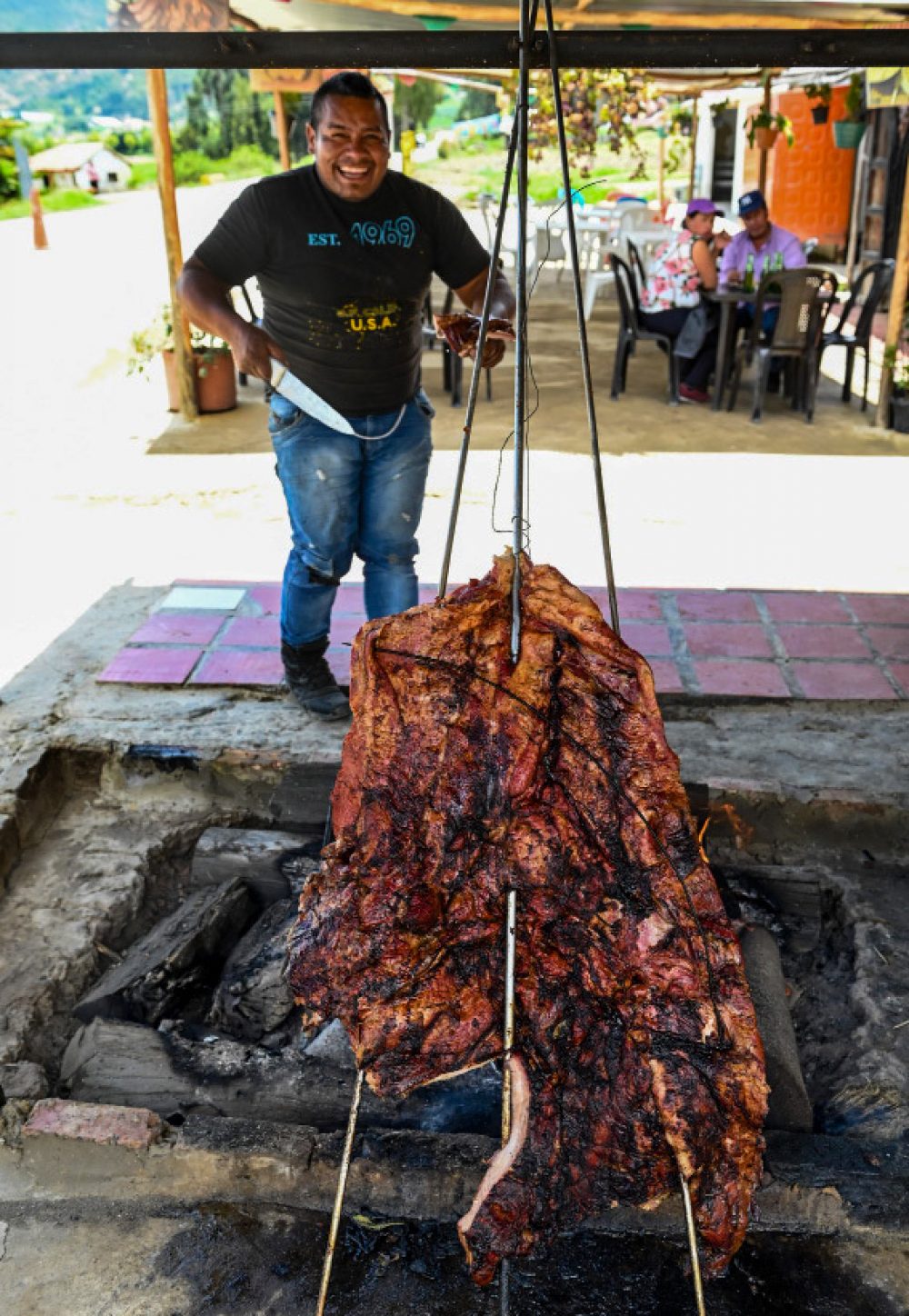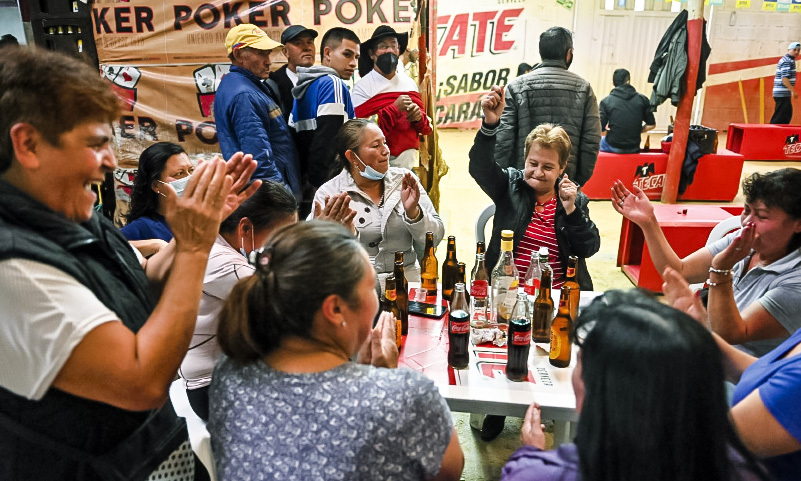Perhaps it was the clusters of men throwing steel pucks into clay mounds packed with explosives, randomly sending dust and thunderclaps into the air. Maybe it was the copious flow of beer and cheap aguardiente, Colombia’s anise-flavored liquor consumed by the shot. Many, many shots, in fact.
Or it could have been the table of aguardiente-fueled women who insisted we dance, again and again. Whatever the cause, it was increasingly difficult to focus on the food, no matter how alluring the aroma of the asado, the savory-salty-herbal-rich-and-sweet (this meat needs more adjectives) slow-grilled meats for which Bogotá is famous.
Because here food is more than a meal. It is an experience. We were at Canchas de Tejo Los Pinos, a rustic... Bar? Restaurant? Game room? Sure... It was in barrio Tibabuyes, the sort of neighborhood where folks warn you need a bodyguard, but really just a willingness to listen, learn, dance and splurge for some aguardiente is fine.
Tejo is a game, the rules of which mystify me still. It involves a series of bowling alley-like lanes made of clay. At the end of each is an earthen mound filled with packets of gunpowder. Players stand at the far end, then toss a lump of steel at the mound, sometimes hitting explosives, sometimes not. I’m still not clear whether hitting the explosives is good.
All of this takes place in a barn-like structure with a corrugated metal roof, its soaring walls decorated with beer ads. To one side, a trio played carranguera, a folk-style music with lyrics of jokes, love and tall tales. Platters of asado filled plastic tables, women laughing loudly each time an explosive was struck. Again... Cheering or jeering? I never quite sorted that.
Eventually, couples turned free space into dance space. And that’s when the aguardiente really flowed. It’s a dive bar in the most glorious, most honest, most welcoming of ways. A dive bar where meat beckons.

Those platters were piled high with crispy, fatty bits of pork belly, steaks and sausage, all mounded on top of a mess of fried plantains, fried potatoes, salt-boiled potatoes and small bowls of aji, the peppery-sweet sauce that in Colombia can be made from almost anything and is served with nearly everything.
Forget fall-off-the-bone. This meat was fall-apart tender. And the flavor, a bold blend of sweet and savory, with herbs and onions most obvious, but sugar and brine almost as pronounced. Sadly, by the time we pulled ourselves away from the dancing and explosions, the kitchen was closed and could offer no lessons in how they prepared their asado.

Luckily, just down the street was Asadero y Piqueteadero el Pariente, one of many neighborhood barbecue shops specializing in all manner of grilled and sauced meats. It was hard to miss. As most of the cooks do, owner Luis Eduardo Beltrán was tending his meats on the street at the front of his shop, his tiny eatery filling with savory smoke.
The meat—every imaginable cut of pork, beef, bird and sausage—was speared on the spokes of a massive metal pyre that dangled by a chain over a fire of eucalyptus logs. Spinning the pyre and moving the meat up and down its hooks controlled the cooking. Every now and again, Beltrán would grab a hunk, slice off a few bites and offer them to anyone passing by.
One bite—succulent, tender, juicy and so flavorful—was all it took to pull us inside, where families of 12 or more crowded long tables, platters of meat gathering between them. Each platter was a heap of glorious barbecue piled on top of caramelized sliced plantains and salty-crackly roasted potatoes.
The beef was intensely savory, with a rich, spicy crust. The sausages, cut into 4-inch lengths, spilled juice over the potatoes and plantains. But it was the pork—thick chops—that we couldn’t stop eating. They were drenchingly moist and wildly flavorful. Each bite was briny and spicy and rich and savory.

Beltrán, along with his wife, worked at the shop for three years before buying it from the previous owner a year ago. He kept the family ethos of the place, but tinkered with the sauce, which he explained is the backbone of asado. It does double duty—marinating the meat to start, then dousing it again after it comes off the heat.
The result is layers of flavor, some crusted and caramelized, some fresh and bright. And the same sauce is used on every meat. Beltrán hedged a bit on the details, but shared enough to get the gears going at Milk Street: cumin, allspice, thyme, salt, bay, apple wine (a beverage similar to a dry hard cider), onion, garlic, sugar and achiote, a bright, flavorful paste made from annatto seeds. All of it pureed until smooth.
We played with various cuts of meat, but our testing agreed with what we’d tasted in Bogotá. All meats were delicious, but pork chops shined brightest. And no need for tossing projectiles at mounds of explosives.







